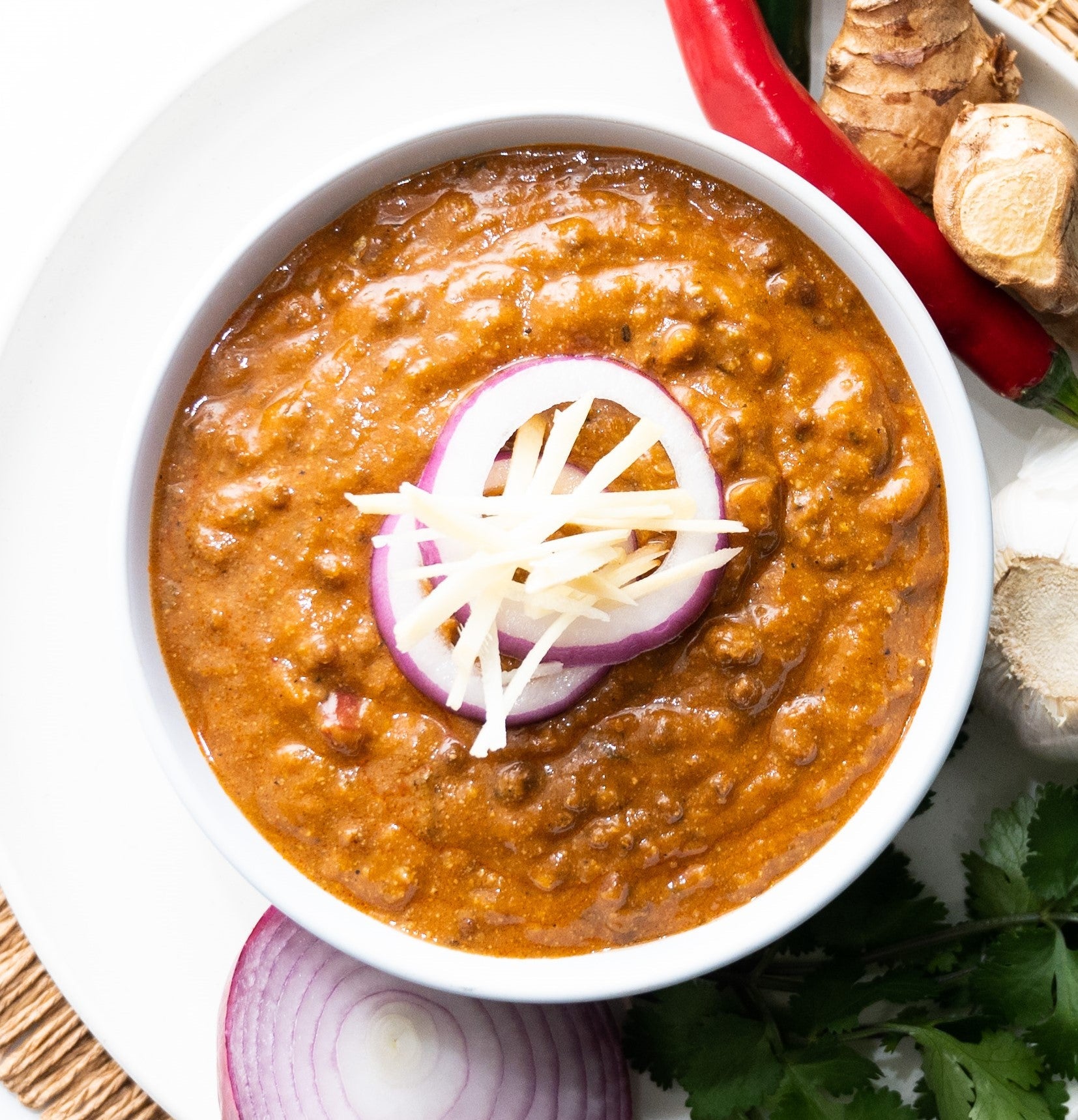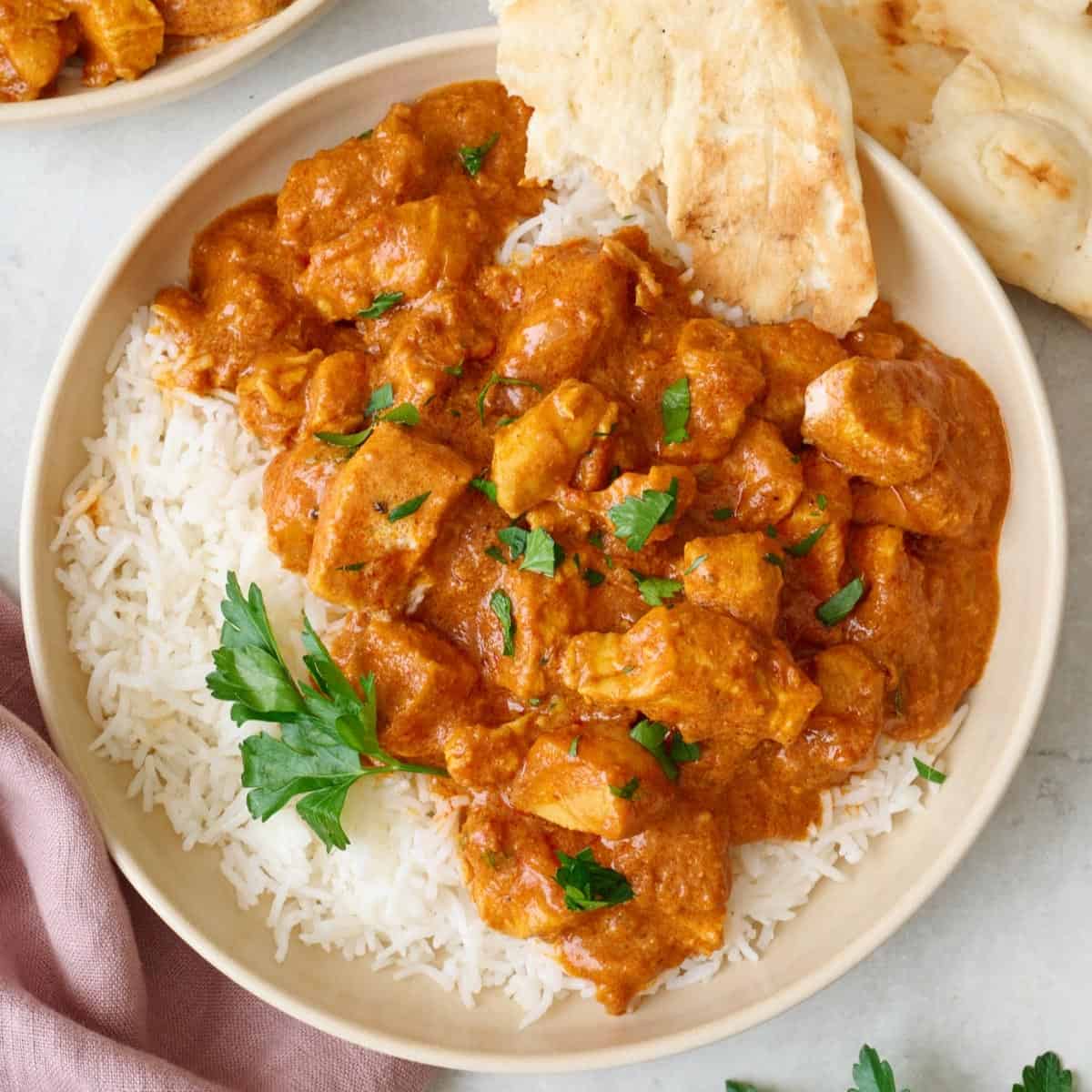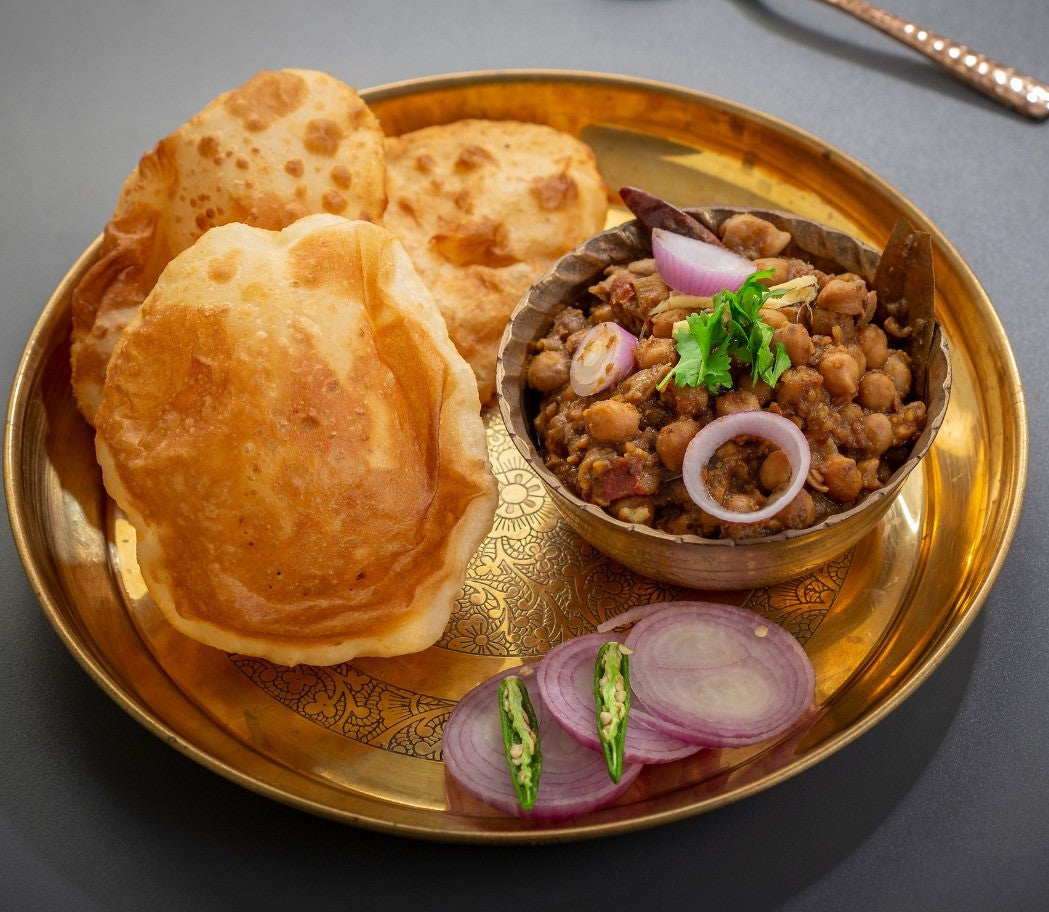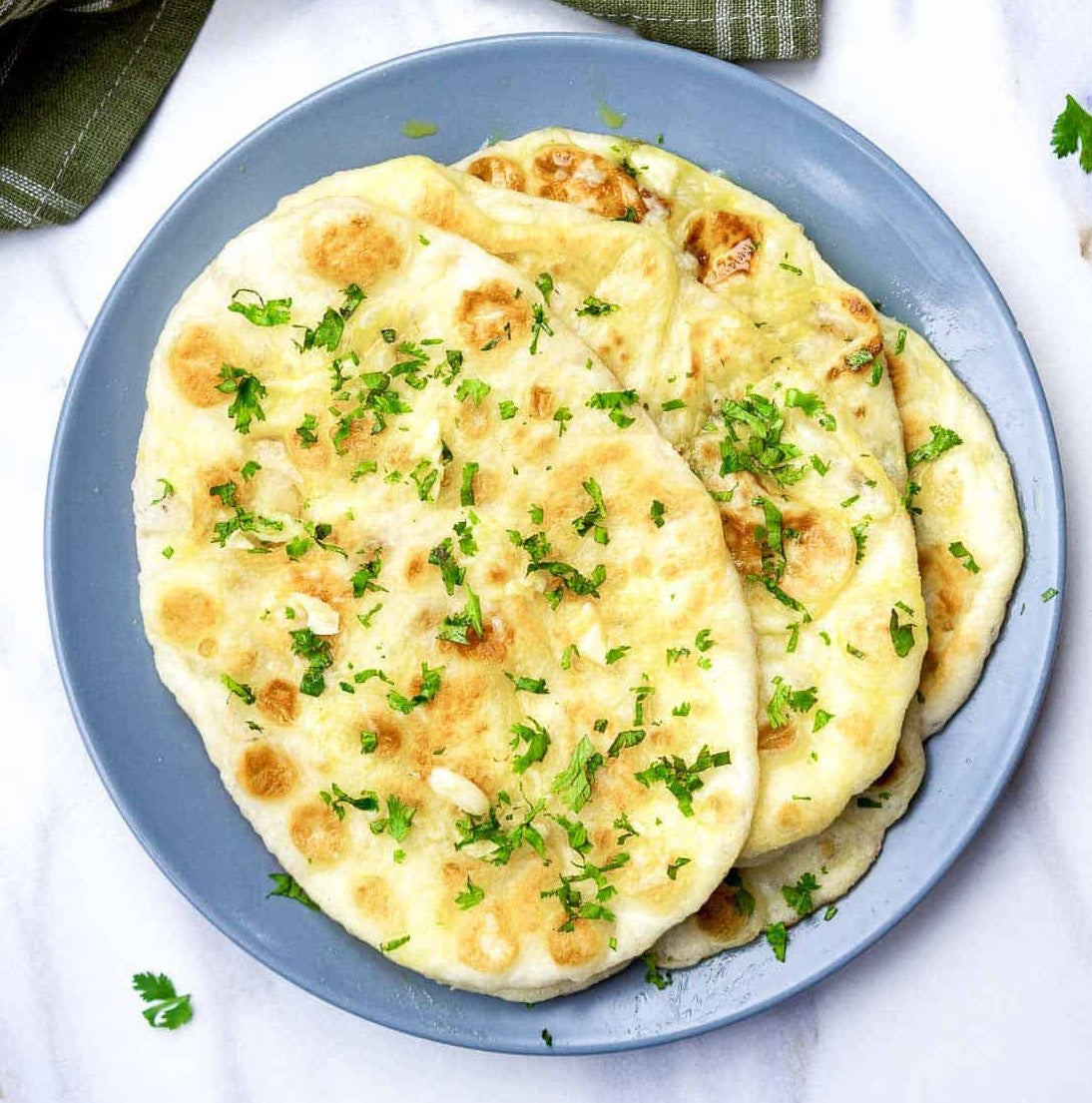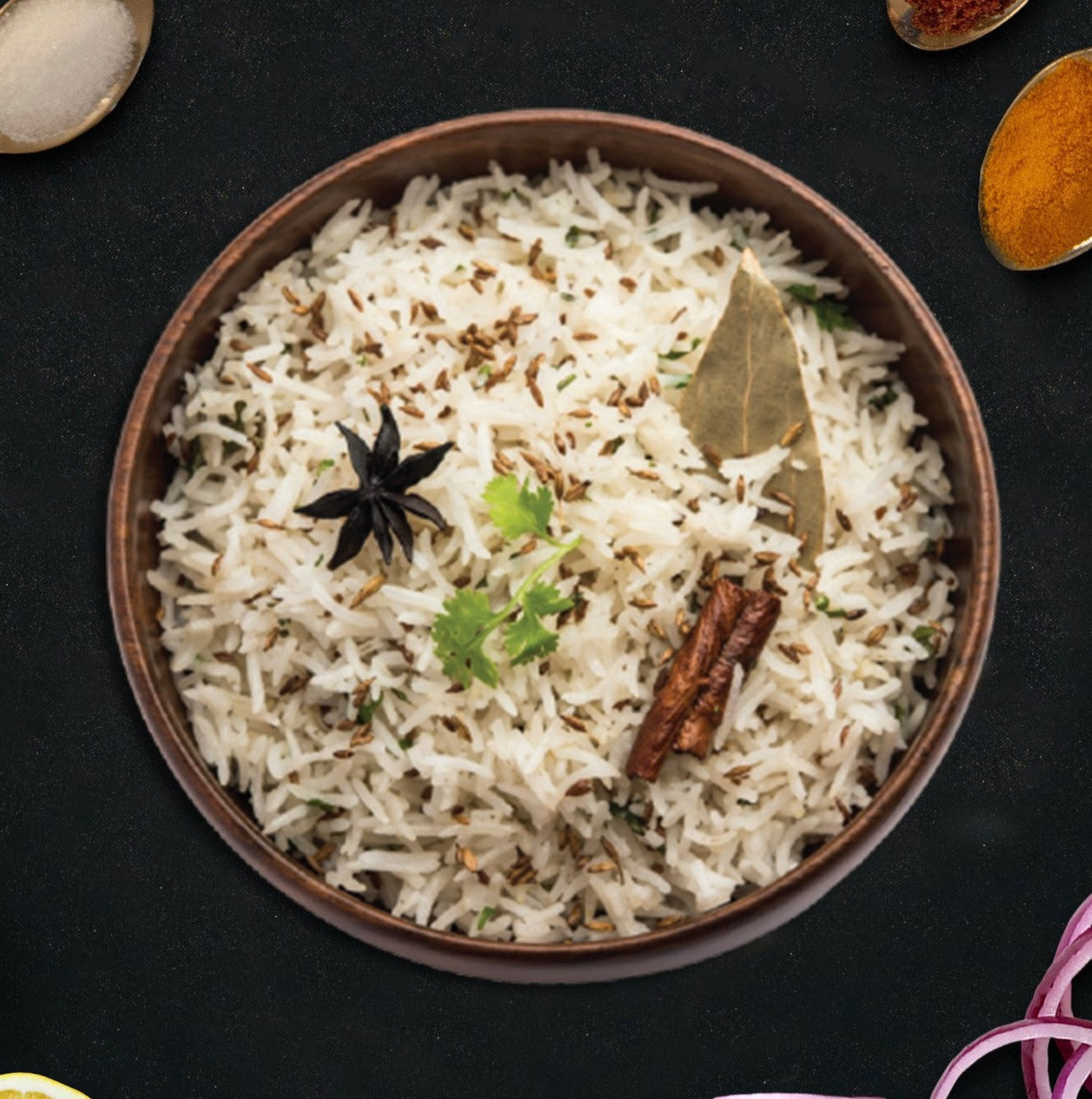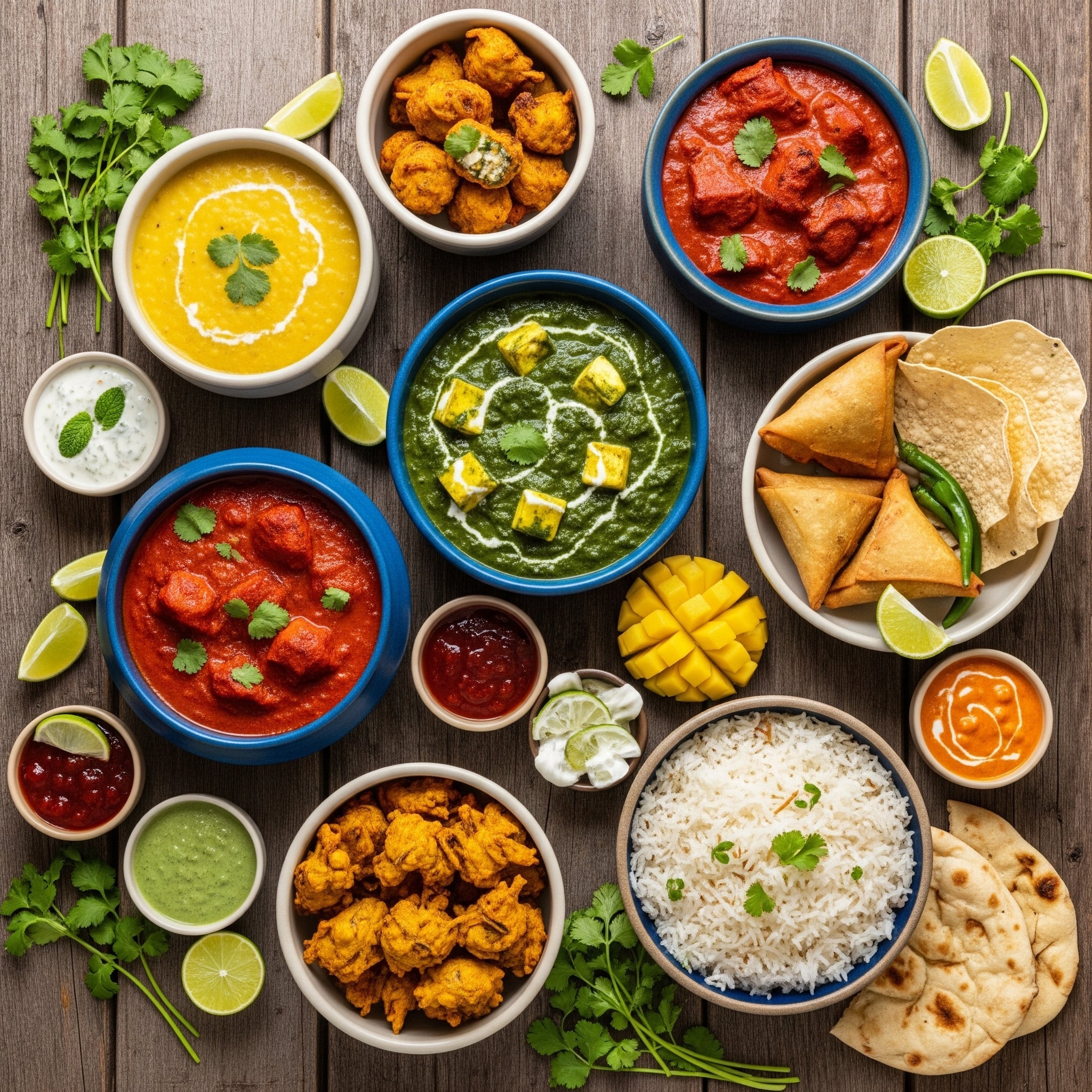
Fusion Indian Restaurant: Your Guide to Modern Indian Dining
At its heart, a fusion Indian restaurant is all about culinary creativity. It's a place where chefs take the traditional spices, recipes, and soul of Indian cooking and combine them with ingredients and techniques from all over the world. The goal isn't just to mix things up; it's to create entirely new and exciting dishes that honour tradition while pushing the boundaries of what Indian food can be.
The Rise of Indian Fusion Cuisine
Picture this: the rich, aromatic spices of a classic Indian curry weaving their way through a bowl of Italian pasta. Or imagine the smoky char of tandoori chicken tucked inside a soft Mexican taco. This is the magic of Indian fusion, a culinary movement that has truly captured the imaginations and tastebuds of adventurous diners across Australia.
This isn't just a trend; it's a celebration of cultural exchange on a plate. This style of cooking is far from random. It's a thoughtful, almost artistic process. The best fusion chefs are like storytellers, carefully weaving together different culinary narratives to create something that feels both comfortingly familiar and refreshingly new. A great fusion dish respects its roots while creating a completely original experience.
Why Is Fusion Dining So Popular?
The real appeal of a fusion Indian restaurant is its ability to surprise and delight. Diners today are hungry for more than just a meal; they want unique food stories and experiences that go beyond the standard menu. This cuisine perfectly satisfies that curiosity with inventive combinations that challenge expectations.
Several things are fuelling its popularity:
- Adventurous Palates: Australians are more open than ever to trying new flavour combinations and embracing global food trends.
- Cultural Crossover: As our communities become more diverse, it's only natural that our cuisines start to mingle, leading to some truly delicious innovations.
- Modern Presentation: Fusion dishes often come with contemporary plating and an artistic flair, making them a feast for the eyes and perfect for sharing on social media.
This growing acceptance mirrors a significant cultural shift in our dining habits. Indian food in Australia is no longer seen as something primarily enjoyed by the Indian community; it has earned widespread popularity among all Australians. Today, native Aussies visit Indian restaurants in nearly equal numbers, showing a deep appreciation for its diverse flavours. You can read more about this in this fascinating exploration of Indian fusion in Australian cuisine.
What Truly Defines a Fusion Indian Restaurant
Think of a top-notch fusion Indian restaurant less like a standard kitchen and more like a creative workshop. This isn't about just throwing different cuisines into a pot and hoping for the best. It's a thoughtful, artistic process grounded in a deep respect for classic Indian flavours, but with a bold willingness to explore new territory.
It’s a bit like a talented musician remixing a classic track—you can still hear the soul of the original song, but new layers and modern beats have turned it into something fresh and exciting.
This culinary creativity generally rests on three pillars of innovation. First up is the introduction of new ingredients. This could be something as subtle as using quinoa instead of semolina to give an upma a modern, nutritious twist, or as surprising as adding creamy avocado to a classic chaat for a new textural experience. The aim is always to add something special without losing the soul of the dish.
Next comes the clever use of contemporary techniques. Chefs are pulling methods from all over the culinary map to put a new spin on Indian favourites. Imagine a succulent lamb dish, cooked to fall-apart tenderness using a French sous-vide technique before getting that final, smoky char in a traditional tandoor. Or picture a deconstructed samosa, with its distinct elements artfully plated for a fine-dining feel.
This infographic gives a great visual breakdown of how traditional roots, global influences, and modern methods come together.
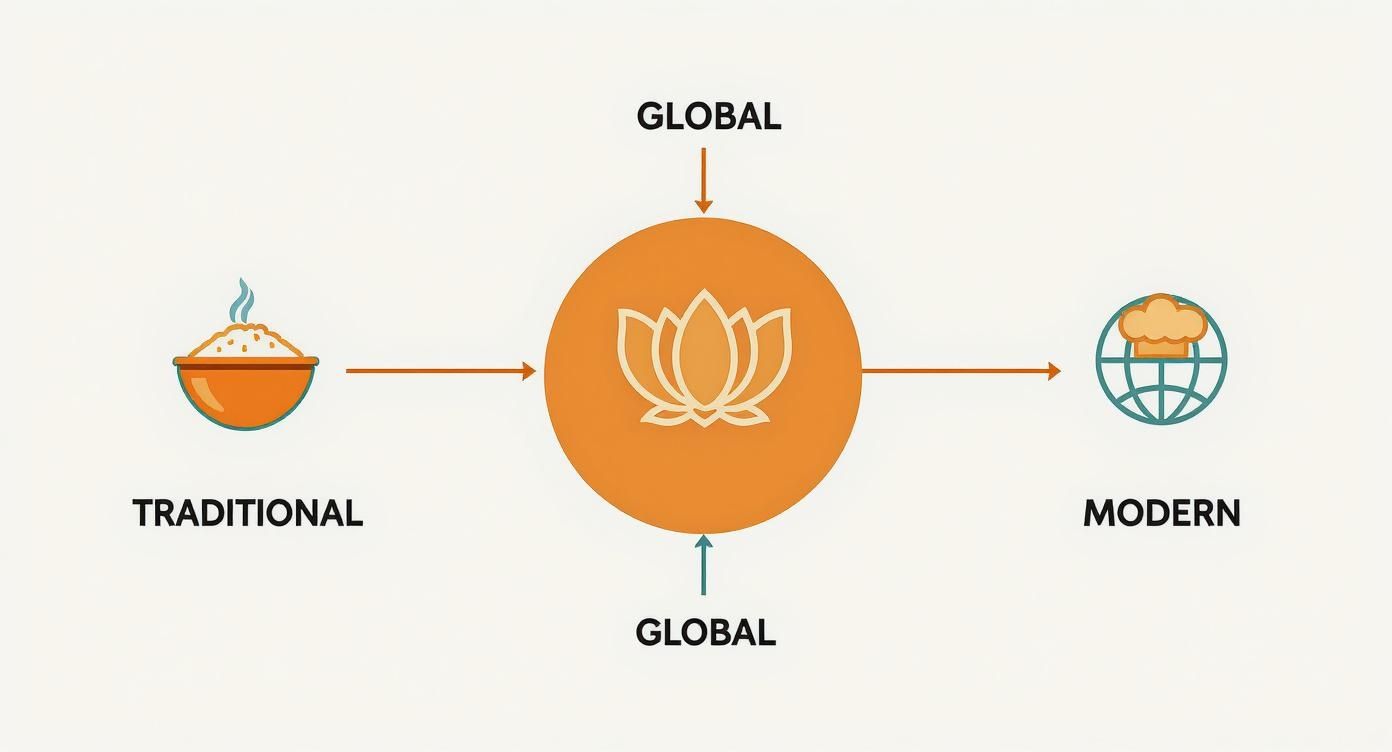
As you can see, the best fusion food honours its heritage while enthusiastically embracing new ideas from around the world.
The Art of Cross-Cultural Inspiration
The third and perhaps most exciting pillar is cross-cultural inspiration. This is where a chef’s creativity really shines, blending the heart and soul of Indian spices with formats people already know and love from other cultures. The results are often playful, wonderfully unexpected, and downright delicious.
Here are a few popular examples you might come across:
- Butter Chicken Pasta: The rich, creamy makhani sauce you know from butter chicken is tossed through perfectly cooked fettuccine, creating the ultimate comfort food hybrid.
- Masala-Spiced Tacos: Tender tandoori chicken or spiced paneer is tucked into a soft tortilla, then topped with tangy pickled onions and a cooling mint chutney yoghurt. It's Indian street food meets Mexican classic.
- Tikka Masala Pizza: Instead of a standard tomato base, a naan or pizza crust is slathered with that unmistakable tikka masala sauce, topped with marinated chicken and melted mozzarella.
To get a clearer picture of what separates these two styles, let's compare them side-by-side.
Traditional vs Fusion Indian Cuisine: A Quick Comparison
This table breaks down the core differences between classic Indian cooking and its innovative fusion counterpart, helping to highlight what makes each approach unique.
| Culinary Aspect | Traditional Indian Approach | Fusion Indian Innovation |
|---|---|---|
| Core Philosophy | Honouring centuries-old recipes and regional authenticity. | Reimagining classic dishes with new ingredients, techniques, and formats. |
| Key Ingredients | Regional spices (turmeric, cumin), lentils, ghee, paneer, local vegetables. | Quinoa, avocado, truffle oil, international cheeses, kale, edamame. |
| Cooking Techniques | Tandoor cooking, slow simmering (dum), tempering (tadka), deep-frying. | Sous-vide, deconstruction, foams, gels, molecular gastronomy. |
| Flavour Profile | Complex, layered spices with distinct regional tastes (e.g., spicy, sour). | Balanced, often milder to complement non-traditional ingredients. |
| Presentation | Often served family-style in traditional bowls (katoris) and platters. | Individually plated, artistic presentation with a focus on visual appeal. |
| Example Dishes | Biryani, Rogan Josh, Dal Makhani, Palak Paneer. | Butter Chicken Pasta, Naan Tacos, Gulab Jamun Cheesecake. |
Ultimately, this thoughtful blend of ingredients, techniques, and global ideas is what sets a genuinely great fusion Indian restaurant apart from one that’s just chasing a trend.
The best fusion cuisine tells a story. It’s a dialogue between different cultures, where a chef uses familiar flavours from one tradition to introduce exciting new ideas from another, creating a dish that is greater than the sum of its parts.
It’s an intentional and respectful approach to culinary evolution, not just a gimmick.
Discovering Signature Fusion Dishes and Flavours
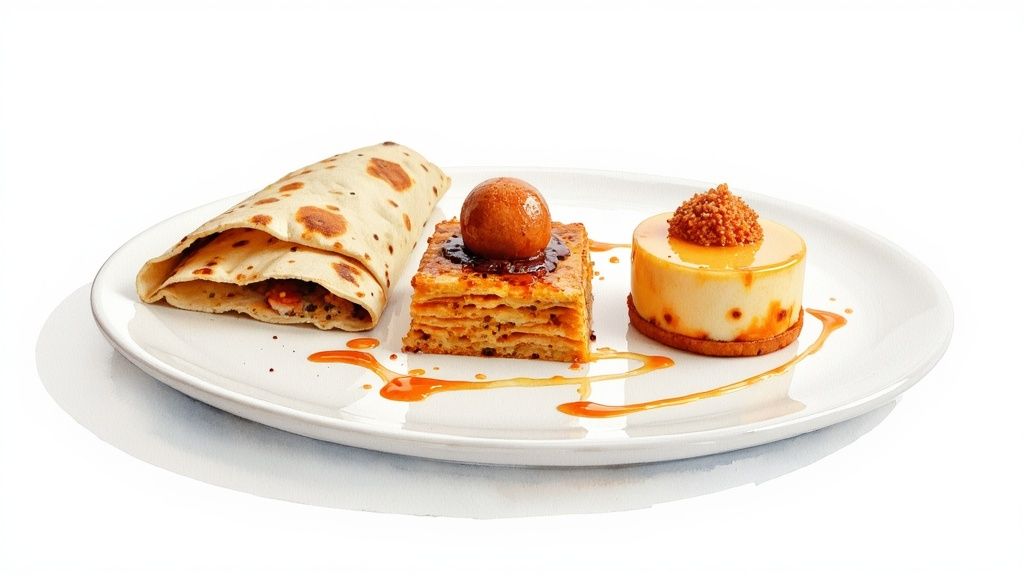
Stepping into a fusion Indian restaurant feels a bit like starting a culinary adventure. The menu is where the real fun begins, filled with dishes that are imaginative, often playful, and designed to surprise you in the best way possible. Chefs are taking the soul of beloved Indian classics and giving them a brand-new, exciting form.
These aren't just quirky novelties; they're thoughtfully crafted meals that build a bridge between cultures on a single plate. They invite you to taste familiar spices in a way you never have before, making for a truly memorable meal. And it seems Aussies are hungry for it—there are now over 1,680 Indian restaurants across the country, many of them exploring these creative fusions. You can see a full breakdown of where they are in this complete business report on Australian Indian restaurants.
Iconic Fusion Creations You Must Try
To really get what fusion is all about, you have to try some of the signature dishes that have become modern classics. These plates are a brilliant showcase of what happens when Indian tradition meets global inspiration.
A perfect example is Naan Tacos. Forget the corn tortilla; here, a soft mini naan is fresh from the tandoor, folded, and filled with tender tandoori-spiced chicken, paneer, or lamb. To finish it off, you get a drizzle of cooling mint chutney, a bit of tangy pickled onion, and a sprinkle of fresh coriander. It's the smoky char of the tandoor meets the casual, easy-to-eat format of a taco.
Then there's the incredibly comforting Butter Chicken Lasagne. This genius creation swaps the usual bolognese for a rich, creamy makhani sauce, layered between pasta sheets with plenty of melted cheese. What you get is a decadent Italian-Indian hybrid that feels both familiar and brand new, delivering hearty satisfaction with a wonderful desi twist.
At its best, fusion food takes two distinct culinary identities and finds their common ground. A dish like Butter Chicken Lasagne works because both Indian makhani and Italian red sauces share a comforting, slow-cooked richness.
These dishes show how fundamental spices are reimagined in new settings. Understanding the role of a spice like cumin in Indian cuisine can give you a deeper appreciation for how chefs adapt these flavours so successfully.
From Savoury Mains to Sweet Endings
The creativity doesn't stop once the main course is cleared. Fusion desserts are often where you'll find the most delightful surprises, with classic Indian sweets reimagined using Western baking techniques.
- Gulab Jamun Cheesecake: This one is a real showstopper. Picture soft, syrup-soaked gulab jamun balls baked right into a creamy, cardamom-spiced cheesecake, all sitting on a crunchy biscuit base. The mix of textures and flavours is just incredible.
- Masala Chai Tiramisu: The classic coffee-soaked Italian dessert gets an Indian makeover. Instead of espresso, ladyfinger biscuits are dipped in a strong brew of masala chai, then layered with a mascarpone cream infused with ginger, cardamom, and cinnamon.
Each of these dishes tells a story of a conversation between cuisines. They respect the authentic flavours of their Indian heritage while playfully embracing new forms. This makes them exciting for seasoned food lovers and wonderfully approachable for anyone new to Indian spices. When you spot these on a menu, you know you're in for a treat.
How to Find a Great Fusion Indian Restaurant
With fusion Indian food popping up on menus everywhere, how do you tell the culinary gems from the short-lived gimmicks? Finding a truly great fusion Indian restaurant goes beyond a quick glance at star ratings. It’s about playing food detective and knowing what to look for on the menu and in the reviews.
A well-considered menu is always your first and best clue. You want to see descriptions that tell a story—what’s the inspiration behind a particular dish? A menu that offers a good mix of creative fusion plates alongside masterfully executed traditional classics is a great sign. It tells you the chef truly understands and respects the fundamentals of Indian cooking before they start experimenting.
On the other hand, if the menu reads like a random list of clashing ingredients thrown together for shock value, be wary. Great fusion is about creating harmony between different culinary worlds, not just chaos on a plate.
Reading Between the Lines of Reviews
Online reviews can be a goldmine, but you have to know how to sift for the valuable nuggets. Skip past the generic "food was good" comments and hunt for reviews that get specific. Diners who really know their food will often comment on the quality of the ingredients, the precise balance of flavours, or the seamless service.
Keep an eye out for keywords that signal a quality experience:
- "Balanced Spices": This is a huge compliment. It means the chef knows how to weave Indian spices into a dish without completely overpowering the other ingredients.
- "Fresh Ingredients": Mentions of fresh produce or high-quality meat and seafood suggest a kitchen that doesn’t cut corners.
- "Creative but Respectful": This is the review you’re looking for. It means the restaurant is pushing boundaries while still honouring the soul of Indian cuisine.
- "Great Ambiance": The environment is a big part of the meal, and a good atmosphere often reflects a restaurant that cares about the entire experience.
By focusing on these details, you’ll get a much clearer picture of what to expect and find a place that really delivers on its promise. You can learn more about finding the real deal by checking out our guide on how to locate great authentic Indian food near me.
Modern Dining and Dietary Needs
Another sign of a top-notch fusion Indian restaurant is how it caters to today's diners. Because these chefs are already in an innovative headspace, they're often brilliant at accommodating different dietary needs with the same level of creativity.
A great fusion restaurant understands that modern dining is about more than just taste; it’s about creating a welcoming experience for everyone. Their creativity in the kitchen often translates to thoughtful vegan, gluten-free, and other allergen-friendly options.
Before you book, check their menu online for clearly labelled dietary sections. A restaurant that puts genuine effort into creating unique, flavourful plant-based or gluten-free fusion dishes isn't just ticking a box—it shows a deep commitment to their craft and their customers. This kind of attention to detail is usually a reliable sign of an amazing dining experience for everyone at the table.
Ordering and Pairing Like a Pro

Stepping into an inventive fusion Indian restaurant for the first time is exciting, but let's be honest, it can also be a bit overwhelming. The menu is packed with dishes you've never seen before. Where do you even begin?
The trick is to think of it less like ordering dinner and more like building an experience. Most fusion menus are practically begging to be shared. It’s the best way to dive into the sheer variety of flavours and textures on offer. Try picking a mix of small plates and a couple of larger, family-style mains. That way, you get to try everything from deconstructed samosas to that butter chicken pasta without getting stuck with just one thing.
The best way to experience a fusion menu is to order collaboratively. Mix a few adventurous small plates with one or two comforting, familiar mains to create a meal that offers both surprise and satisfaction.
This strategy really pays off. It creates a balanced, dynamic meal where every dish has its moment, making the whole experience more engaging for everyone at the table.
Perfect Pairings Beyond the Usual Beer
A cold Kingfisher with a curry is a classic for a reason, but fusion Indian cuisine throws the door wide open for more exciting drink pairings. The intricate and often delicate flavours in these dishes can be elevated from great to spectacular with the right drink. Don’t be shy—it’s worth moving beyond the usual suspects.
Think about how different drinks can play off the food:
- Crisp White Wines: A dry Riesling or a zesty Sauvignon Blanc is your best friend for anything creamy or rich. That sharp acidity slices right through a buttery makhani sauce, cleansing your palate and getting you ready for the next bite.
- Light Red Wines: A Pinot Noir, with its subtle earthy notes, has just enough structure to stand up to tandoori spices without steamrolling them. It’s a brilliant match for anything grilled, whether it’s meat or paneer.
- Craft Cocktails: Now we're talking. This is where the kitchen and the bar really start to collaborate. Look for gin-based cocktails infused with cardamom, or maybe a rum drink with a kick of mango and chilli. These can echo the flavours in your food in the most amazing ways.
Tips for a Flawless Dining Experience
To really make the most of your visit, a few pro tips can make all the difference. First and foremost, chat with your server. They're your guide for the night. They know the menu inside and out and can point you towards dishes that hit all the right notes for you, whether you’re after spicy, sweet, or savoury.
It’s also a good idea to ask about portion sizes so you can figure out how many share plates to get for your group. And whatever you do, save room for dessert. Fusion sweets like a gulab jamun cheesecake or a saffron panna cotta are often the most creative and memorable part of the meal—the perfect, surprising end to your culinary adventure.
Your At-Home Guide to Gourmet Indian Flavours
There’s nothing quite like the experience of a creative fusion Indian restaurant, but let's be honest—sometimes you just want those incredible, comforting flavours without having to leave the house. What if you could get that gourmet quality in your own kitchen, ready to go in just a few minutes?
This isn't just wishful thinking. The demand for premium, authentic global food is skyrocketing. Australia's ethnic food market was valued at USD 1.33 billion in 2024 and is on track to more than double by 2032. You can dig into the numbers in this Australian ethnic food market report. This massive growth shows we're all looking for genuine flavours that actually fit into our busy lives.
This is where brilliant ready-to-eat options step in, solving the 'what's for dinner?' dilemma on those hectic weeknights when you’re craving something special.
Homestyle Indian Meals Delivered
This is precisely the gap that brands like Jewel of Asia are filling, delivering chef-made, homestyle Indian meals right to your doorstep. We’re not talking about those bland, preservative-packed frozen dinners from the back of the supermarket. These are real dishes, crafted with all-natural ingredients, designed to taste like they’ve just come out of a family kitchen.
It’s the perfect way to enjoy the authentic taste of India without skimping on quality or your health. Think of it as your secret weapon for when you’re short on time but refuse to settle for a bland or boring meal.
The new wave of ready-to-eat meals is all about authenticity and quality ingredients. The goal is to give you the experience of a freshly cooked, homestyle dish, making incredible Indian flavours an easy option for any day of the week.
Ultimately, it means you get to enjoy a delicious, nourishing dinner without any of the chopping, stirring, or cleaning up.
Delicious Choices for Every Diet
One of the best things about this modern approach to convenience is the focus on different dietary needs. Finding delicious, ready-made meals that fit your lifestyle is no longer a mission impossible.
You can easily find dishes that are:
- Vegetarian and Vegan: A huge range of plant-based meals that are bursting with flavour.
- Gluten-Free: Prepared with care to avoid gluten, but never at the expense of taste.
- High-Protein: Perfect for anyone looking for a hearty, satisfying, and nutritious option.
With a huge menu of delicious Indian curries, you can stock your fridge with everything from a classic Butter Chicken to a rich Palak Paneer. A fantastic Indian dinner is now always just moments away.
Your Questions About Indian Fusion, Answered
Stepping into the world of Indian fusion cooking can spark a few questions, especially if you're used to more traditional menus. That's completely normal! Let's clear up some of the most common queries so you can feel confident and excited about your next meal.
Think of this as a quick chat before you head out to a fusion Indian restaurant. We'll cover everything from what "authentic" really means here to how to navigate the menu if you're not a fan of fiery heat.
Is Fusion Food Still Authentic?
This is a great question, and one that gets right to the heart of what fusion cooking is all about. When it comes to fusion, authenticity isn't about sticking rigidly to a recipe from centuries ago. Instead, it’s about honouring the soul and core flavours of Indian cuisine while thoughtfully weaving them into something new.
A good fusion dish never forgets where it came from. The authenticity lies in the respect for the ingredients and the skilful balance of classic Indian spice profiles. So, when a chef uses cumin in a completely new way, they aren't being inauthentic; they're actually celebrating its incredible versatility.
What If I Don’t Like Very Spicy Food?
It's a common myth that all Indian food is blisteringly hot. In reality, a good chef is a master of balance, orchestrating a harmony of sweet, sour, savoury, and spicy notes. Overpowering chilli heat is rarely the goal, especially in a creative fusion kitchen.
If you prefer milder flavours, here’s how to order with confidence:
- Look for creamy dishes: Curries made with yoghurt, coconut milk, or cashew paste (like a classic Korma) are almost always on the gentler side of the spectrum.
- Opt for tandoori items: The magic of tandoori cooking comes from its smoky char and aromatic, yoghurt-based marinade—not from intense chilli.
- Just ask! Your server is your best guide. Don't be shy about asking for recommendations for dishes that are big on flavour but low on heat. They'll be happy to point you in the right direction.
Ready to enjoy incredible Indian flavours without leaving home? Jewel of Asia delivers chef-crafted, homestyle meals right to your door. Explore our menu of over 50 delicious, preservative-free options at Jewel of Asia.
Share

